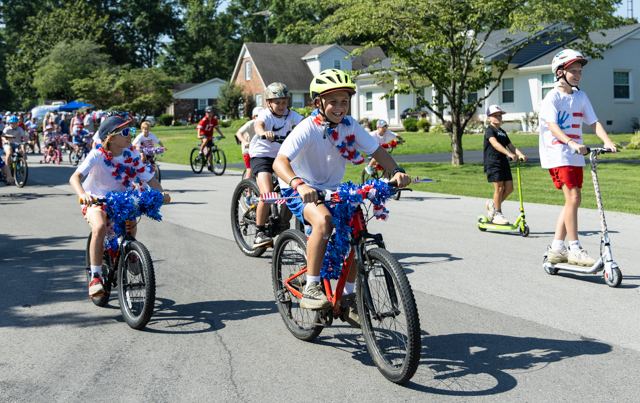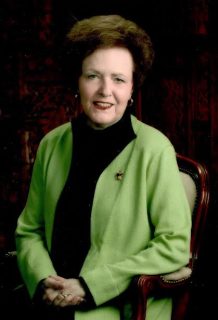Residents feel soaked by drainage project
Published 12:00 am Saturday, September 9, 2006
A year ago the city announced it would spend tens of thousands of dollars to deal with chronic flooding problems on and around South Sunrise Drive.
The Public Works department hired a contractor to enlarge a drainage basin on a city-owned vacant lot. Bundled with two smaller water-control projects on Barry Street and Navajo Drive, the work was bid out for $80,600 in May, and all must be done by Oct. 24, City Engineer Jeff Lashlee said. The enlarged basin on Media Drive – the next street over from South Sunrise – is finished already, with straw over recently seeded dirt.
Some residents of South Sunrise complain, however, that they thought the announced work would fix all their flooding problems, only to find little if any improvement from the bigger basin down the street.
“It’s just like a river coming down through here,” said Neva Long, a resident of 1724 South Sunrise Drive for 26 years.
Heavy rainwater runoff down the sloping street has always been a problem, she said.
“We’ve been after this for about 10 years, that we’ve been trying to get something done,” Long said.
Water flows from her side of the street across to Martha Osborne’s at 1733 South Sunrise Drive, she said.
Osborne, who said she’s lived there about 19 years, shows pictures from 2005 of her yard under several inches of water. Whenever it rains heavily, water pours down the street and under her house, deep enough to flow over railroad ties and concrete blocks, and it’s starting to erode her house’s foundation, she said.
The problem has only worsened in recent years as neighbors dumped loads of dirt on their own property to raise their yards above flood level, channeling even more onto Osborne’s and other low-lying properties, she said.
But city Public Works staff said the South Sunrise/Media Drive project does what it was meant to do, and can’t be expected to prevent water from flowing downhill.
“What the basin was intended to do was take care of water once it got down to low ground, where it tended to pond and wash out ditches and things like that,” said Public Works Director Emmett Wood. “That doesn’t mean we’re going to cure every problem on South Sunrise.”
The city’s work on South Sunrise is finished, Lashlee said.
Wood said he doubts the city could really do anything about the course of water flow largely across private property.
Residents immediately surrounding the drainage basin should see the results in much quicker draining of water that used to pond up, he said. Those uphill from the basin, however, can’t expect to see their water flow change as a result.
“That’s true in a lot of places we dig basins,” Wood said.
Since 2003, the city has been under federal requirements to manage pollutants in stormwater runoff. Bowling Green spends $900,000 to $1 million per year on stormwater quality, and city officials decided to put about $100,000 of that into dealing with neighborhood flooding problems, although that’s not required by the federal law. The South Sunrise project topped the 2006 list for back yard capital improvement projects.
Residents started by asking Warren County to deal with their flooding problem, but the last two District 2 magistrates did nothing, Osborne said.
Long said she recently asked current District 2 Magistrate Cedric Burnam to look at the problem, but has heard nothing further.
Burnam said Friday the area does appear to need more work, but since those streets are within the city limits, the county doesn’t control them.
When Burnam gets requests on similar problems, he turns them in to the city, he said. City engineers were aware of all the related flooding issues, Burnam said, but he complimented the city’s usual level of response on neighborhood concerns.
Osborne said when she moved into the neighborhood there was a deep ditch alongside the street, but the county filled it in with dirt and gravel years ago. Clearing that again might help, but since yards have been built up since then, the runoff problem is worse, she said.
Osborne said she and other South Sunrise residents have repeatedly brought up their runoff problem to city officials at Neighborhood Watch meetings.
“Everybody keeps saying, ‘We’ll do something,’ but nothing ever gets done,” she said.
Osborne acknowledges, however, it would probably take building up every yard in the area with fill dirt to keep water from pooling in and around the houses. Raising hers would probably cost at least $1,600, she estimates.
She doesn’t expect the city to pay for all that dirt, but the city should do everything it can to control water running down its streets, Osborne said.
When the city last blacktopped South Sunrise, it put a new dry well – a drainage hole punched straight down into local caves – under a grating a couple of doors down from Osborne’s house, she said.
“If they can build a hole over there for water to go into, why can’t they put one over here?” Osborne said.






